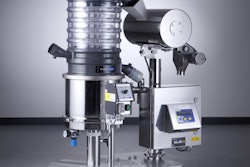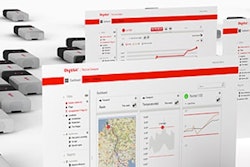1. Involve operators and production personnel from the get-go. While engineering and purchasing may seem to know everything about a project, production personnel have to live with the equipment on a daily basis. Get the production manager, line operators, and maintenance personnel involved as close as possible to the beginning of the project. (In the healthcare industries, it’s also vitally important to involve quality and regulatory/compliance personnel early on as well.) Production people don’t need to be at every meeting, but they should be at the critical ones. The more familiar they are with the equipment when it reaches the floor, the more likely the installation will go smoothly.
2. Don’t be penny-wise and pound-foolish about the install. Engineers often think they can save the company money by installing the equipment themselves. However, having the supplier install its own equipment—or at the least, oversee installation according to its standards—will save you time now and money down the road. The supplier’s technicians really should be present for the whole ramp-up curve; it’s better to pay for three weeks of their time than to have them there for a day and then have the line go down for three weeks.
3. Use your best production people. Don’t choose mediocre or unenthusiastic operators for something as important as a line start-up. Staff it with your best and brightest who can then teach the others. While the oldest staff members are likely to have the most experience, younger personnel may be more open to new technologies and more readily learn how to properly run and change over the equipment. This is especially important if the machines are brand-new technology for the plant, or are considered critical to ongoing operations.
4. Document what you learn from suppliers. Depending on the complexity of the equipment, it may be worthwhile to keep a supplier technician or technicians in your factory an extra few days. During that time, follow the technicians and learn everything you can to fill in any knowledge gaps among operators. Use all the tools at your disposal to capture this information, from shooting video to taking digital snapshots to simply writing notes. This information may prove invaluable over time.
5. Document last-minute changes to line layouts. Often during installation, adjustments are made to equipment positioning that deviate from the line layout drawings prepared at the beginning of the project. Take the time to go back and modify these drawings so that the final versions reflect the actual line as built. Down the road, you’ll avoid lost time caused by a mismatch between what the drawing says and the reality on your floor.
6. Finish the punch list. During the line start-up, it’s common to compile a punch list of minor adjustments and then never follow up once product is being successfully produced. Unfortunately, this can lead to problems down the road that impact product quality. Operators are less likely to bring these problems to anyone’s attention because “it’s always been done this way.” The punch list should be reviewed and approved by engineering, production, and management, with ownership transferred from engineering to production in a formal sign-off procedure.
7. Don’t forget spare parts. Things do fail during start-up. Remember to request a spare parts list and order the critical spares so they are delivered prior to the equipment arriving at your factory.
8. Get complete equipment documentation. Collect all the necessary equipment documentation and specifications such as mechanical and electrical schematics, equipment drawings (“as built”), and bill of materials.
9. Establish performance criteria. Linking a vendor payment to the equipment’s performance at start-up can be a strong incentive for the vendor. As part of a formal acceptance test, consider an extended testing period, covering enough shifts (or even weeks) to really understand the machine’s abilities and limitations. Consider extended warranty and service contracts, especially for mission-critical equipment. Be fair to the supplier, though, when demanding so much; don’t delay tests, or introduce a product change or variation, without consideration of the supplier’s time.
10. Consider pre-integrating the line off-site. Many packaging machinery engineering veterans insist it’s worth the extra time and expense to integrate at an off-site facility, rather than doing it in your plant. Remember, once the machines are in production, the expectation is they’ll be in production quickly. For this pre-integration, try to select the vendor with the furthest upstream machine that has the space for integration, or even at the company that builds the processing equipment. Often something breaks or fails during this critical period, and if a machine part needs to be redesigned, it can be done far more quickly at the machine builder’s plant. It’s not going to be done for free, and not everyone has the space to support it. Machine builders that do are well worth engaging. Some packagers have even rented a warehouse near one of their machine builders and installed the complete line, wiring the machines together, bringing in air, integrating controls, etc. It adds cost and time to the schedule—typically two to three weeks—but weigh it against the cost and time impact of running really poorly for the first month.
11. Be realistic. Don’t do too much too soon. Have a reasonable ramp-up curve. Many projects fail in hour number two because they’re running at 100% too early.
Liked this article? Download the Primary Packaging Line Equipment Playbook here. Download the End-of-Line Packaging Equipment Playbook here.


























